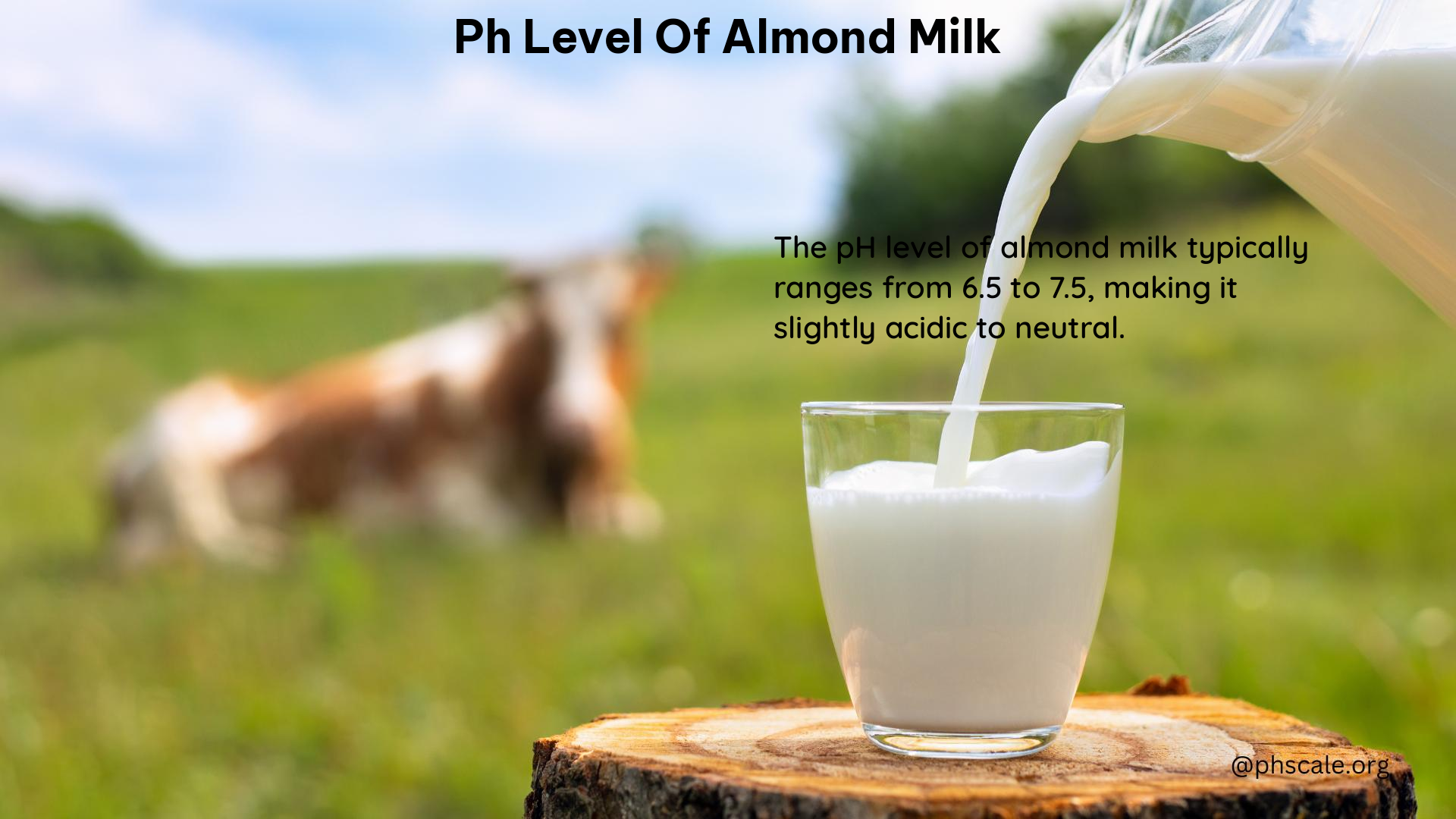The pH level of almond milk is a crucial aspect to consider, especially for those who are particular about the acidity or alkalinity of their beverages. Almond milk, a popular plant-based alternative to dairy milk, has a unique pH range that can impact its taste, digestibility, and overall health benefits.
pH Range of Almond Milk
The pH of almond milk typically ranges from 6.5 to 8.0, making it slightly more alkaline than cow’s milk, which has a pH range of 6.4 to 6.8. This pH range can be influenced by various factors, including the quality of the almonds used, the water source, the processing methods employed, and any additives or fortifications present in the final product.
Comparing pH Levels of Different Milks

When comparing the pH levels of different milk alternatives, it’s interesting to note that soy milk has a similar pH range to almond milk, falling between 6.6 and 7.0. This similarity in pH levels can be attributed to the inherent properties of the plant-based ingredients used in the production of these milk alternatives.
pH Levels of Different Brands
The pH level of almond milk can vary between different brands and products. For instance, Silk brand almond milks have been found to have a higher pH, ranging from 7 to 8, making them more alkaline and potentially more effective at neutralizing acids. On the other hand, Almond Breeze unsweetened almond milk has a pH of 7, while Trader Joe’s unsweetened almond milk has a pH of 6.
Adjusting pH Level of Homemade Almond Milk
For those who prefer to make their own almond milk at home, it’s possible to adjust the pH level to suit individual preferences. Ingredients such as lemon juice and apple cider vinegar can be used to lower the pH level, making the almond milk more acidic. To achieve the desired pH, it’s recommended to start with the homemade almond milk and then add a small amount of lemon juice or apple cider vinegar, tasting and adjusting as needed.
Contaminants and Chemicals
It’s important to note that the pH level of almond milk can also be influenced by the presence of contaminants or chemicals. For example, sucrose-sweetened almond milk has been found to have a lower pH (4.56±0.66) compared to unsweetened almond milk. Additionally, the amount of lactic acid produced in almond milk can vary depending on the type and brand, with some supporting more lactic acid production than others.
Health Implications
The pH level of almond milk can have implications for health and well-being. Almond milk is generally considered an alkaline-forming food, which means it can help balance the body’s pH levels. This can be particularly beneficial for individuals who consume a diet high in acid-forming foods, as the alkaline properties of almond milk can help neutralize the acidity.
Furthermore, the pH level of almond milk can impact digestive health. More alkaline milks, such as those with a pH of 7 or higher, may be beneficial for individuals with acid reflux or heartburn, as they can help soothe the digestive system and reduce the symptoms associated with these conditions.
References
- Healthline. (2018). The pH of Milk and Plant-Based Alternatives: Effects on the Body. Retrieved from https://www.healthline.com/health/ph-of-milk
- Reddit. (2023). Some Almond Milks Are More Basic than Others. Retrieved from https://www.reddit.com/r/acidreflux/comments/114xo84/some_almond_milks_are_more_basic_than_others/
- Casa de Sante. (n.d.). Understanding the pH Level of Almond Milk. Retrieved from https://casadesante.com/en-eu/blogs/milk-alternatives/understanding-the-ph-level-of-almond-milk
- NCBI. (2017). Analysis of the Cariogenic Potential of Various Almond Milk Beverages. Retrieved from https://www.ncbi.nlm.nih.gov/pmc/articles/PMC5828958/.
